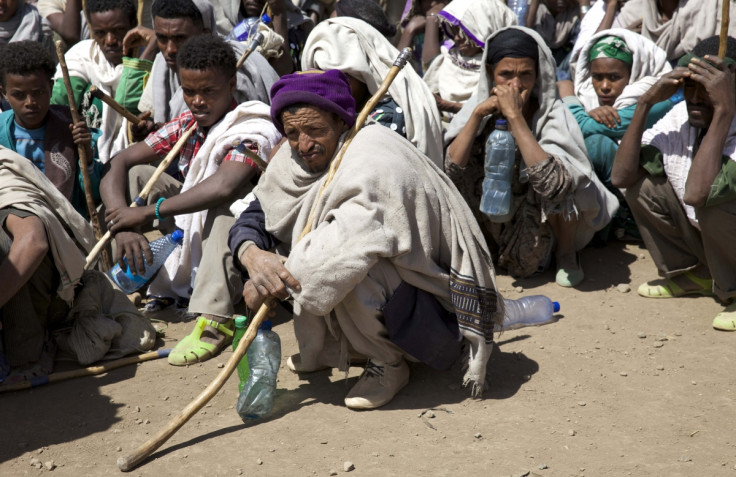How Ethereum can help financially excluded farmers in Africa into the insurance market
IBTimes spoke to Dr Stephan Karpischek, founder, Etherisc at EDCON Ethereum developer event in Paris.

Etherisc is pushing a new type of blockchain-based insurance which can serve farmers in the developing world, who are commercially excluded from the insurance market.
Etherisc builds applications which use Ethereum, the blockchain which can lock up tokenised capital using computer code and then disburse payments according to pre-programmed rules, which execute a variety of financial (and other) services in a much more efficient, transparent and logical manner.
The type of insurance being tested here is sometimes referred to as "parametric insurance", where risks, such as the failure of crops, are correlated to pre-set parameters or trigger-events like bad weather conditions.
Dr Stephan Karpischek, founder, Etherisc explained that they used weather data to model a crop insurance product with a focus on rural Africa. He said: "This opens the market for farmers; until now they just could not afford to pay an insurance premium at the level where it would be economically reasonable for insurance companies to operate."
An insurance company in the traditional model cannot offer crop insurance for one or two dollars a month; it just doesn't make sense for them from an economic perspective, he said.
"With this model we can do exactly that. We can do very, very small amounts of premiums and operate on an economically very low scale because everything is automated.
"So basically it's a type of insurance where the pay-out is fixed, and you know in advance how much money you will get. The trigger for the pay-out can be derived from a data stream automatically. So it's algorithmic; there's no need to assess claims or assess damages and there is no manual interaction needed any more.
"That makes it very attractive to enter new markets which so far have just not been available or not been accessible."
Dr Karpischek takes a refreshingly frank view of the traditional insurance market. "I think in our position, it is an advantage not to come from traditional insurance thinking." he says. "Of course we are talking to quite a lot of insurance companies and are being informed by them. Crop insurance in developing countries is one of the most under-insured markets today. It's a true risk; it's an existential risk for many of them, and there is no coverage."
Karpischek says there are two types of blockchain approaches to insurance; the first, which is being explored by many players, involves cost efficiencies around instant reconciliation thanks to distributed ledgers; the second type, which much fewer people are looking at, means re-imagining the whole structure of the business from scratch.
"We want to create a standard protocol for insurance on the blockchain. In the crop insurance example, we would be looking forward at existing payment methods like M-Pesa, for example, and building a bridge between this and blockchain. And we are not far away from that; it will happen sooner or later. As soon as we have such a bridge, rolling out those models is very cost effective. We don't need much money to do that."
Last year at Ethereum DevCon 2 in Shanghai, Etherisc launched a flight insurance experiment, using real money on the Ethereum mainnet. The user enters their flight number and transfers a small amount of ether to a smart contract. As soon as the flight is delayed the user gets an automatic pay-out with no further interaction needed.
"There is no claims process," said Karpischek. "You don't need to do anything; there is no insurance company in that sense. It's basically a pool, a mutual where every participant pays in a small amount and the ones that have a delay or when the flight is cancelled get a pay-out. It runs very smoothly, the incentives are nicely aligned and we can scale this up."
He said this type of escrow model can also have benefits for regulators, and mentioned Europe's Solvency II Directive in this regard. The Etherisc models can guarantee solvency up to 100% and because Ethereum is transparent, everybody can audit the contract.
"The auditing and the regulatory framework that occur in the insurance models create a lot of operational costs. Why is it necessary? It's because you have a huge asymmetry between the insurance company and the customers.
"With a smart contract model we can equalise the relationship and we can realign the incentives of customers and insurance in an automated and decentralised peer to peer system."
© Copyright IBTimes 2025. All rights reserved.






















